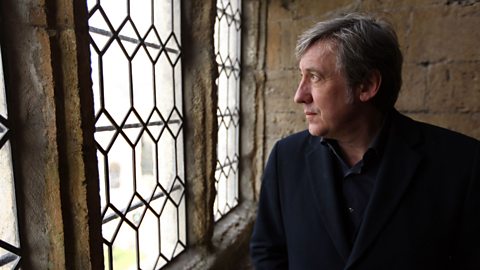Andrew Graham Dixon's new series The Art of Gothic was on BBC4 last night - now available on i-Player.
Here's AGD getting in to character.

Part of the BBC Gothic Season - well it is near Hallowe'en after all - this is the spooky tale of how the upper and middle classes of 18th century England went a bit bonkers for scary stuff.
Yes, out of the Age of Enlightenment and Reason a monster was
born - a Gothic obsession with monsters, ghouls, ghosts and things that
go bump in the night. From restrained aristocratic beginnings to
pornographic excesses, the Gothic revival came to influence popular art,
architecture and literature. Which led to Hammer-horror type literature (such as the Mysteries of Udolpho and The Monk), collapsing piles of stately homes such as Fonthill, and real follies that were built to look half-built.
And then there was Salvator Rosa. Hurrah! You can read more HERE in my blog.
Now Rosa (1615-1673, fact fans), was a Neapolitan painter of bandits, rugged, ravaged landscapes, scurrolous poems and plays and paintings of witches. And, incidently, a landscape painter who painted en plein air a couple of centuries before the Impressionists strode out into the French countryside. Hah!
AGD looked at the example in the National Gallery, Witches at their Incantations of 1646.
It's a quite bonkers little painting, which Rosa considered to be one of his finest (but then, he wasn't exactly the most modest of people), and has all sorts of hellish goings-on - hanged men, babies being sacrificed, spells being cast, skeletons of monsters rising up from the dead. All of these, says AGD, are lit as if by the lighting flashes from a storm. And the whole confection is apparently Rosa saying, "You think this is all going on out there? Well, what a load of far-fetched rubbish."
Although a wow in 1646, Rosa fell out of favour. He was then right slap bang in fashion again during the Gothic, and this painting was just the sort of thrilling thing that society was looking for in the mid 1700s.
And then he went out of fashion again. Oh dear.
AGD also looked at the first Goth - Thomas Chatterton, an irritatingly precocious attention-seeking melancholic chap who forged medieval manuscripts under the guise of a thirteenth century monk - very badly as AGD found out when he went to look at the originals. Lots of tea-stains sloshed about.
Born in Bristol in 1752, here's Junior Chatterton, looking intense and moody. Here, he's on holiday, but he's chosen to spend it indoors, mooning about writing some faux-medieval poetry.
Chatterton's Holiday Afternoon engraved by William Ridgway, after W.B. Morris, pub. 1875
During his summer hols, he wrote political letters, plays, eulogies and satires, determining to take on London literary society. But it all went pear-shaped, his forgeries got a D minus ('Must try harder' - Horace Walpole), and he dramatically killed himself in August 1770 by drinking arsenic, aged 17, three days after being trapped in an open grave in St Pancras. Could happen to anyone. Gothic indeed.
Henry Wallis, the Death of Chatterton, 1856
Anyway, I wasn't hugely enamoured of this latest series by Mr Graham Dixon. I have to say, it didn't really hold my attention, but that has a lot to do purely with the subject. All the Gothic literary and painterly melodrama, the money poured into follies and postured thrill-seeking was never something that really gripped or interested me. It's just all very mannered and unreal. People with money and too much time on their hands were spending that money and time to conjour up something to scare themselves with, when there was plenty of very scary real life stuff happening to less fortunate people right outside their doors. Like poverty. Or disease. Or the French Revolution.
Or maybe that was all just TOO scary...
No comments:
Post a Comment